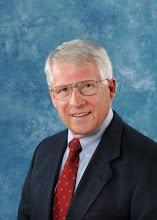Welcome to the Community and Regional Resilience Institute (CARRI) Blog. A new feature of the Institute, we hope that this site will serve two purposes – 1) to promote discussion among community practitioners and the Institute staff on ideas, practices and processes being developed to assist communities to become more resilient and 2) to enhance communication among other similarly focused centers. We welcome your ideas and your questions. We will provide answers where we can and assist you in finding answers where we need to learn with you.
For those not familiar with our Institute -- In early 2007 the Department of Homeland Security suggested the Oak Ridge National Laboratory (ORNL) look at "resilience" as part of the congressionally mandated Southeast Region Research Initiative (SERRI). With some considerable doubt and uncertainty, we began a fairly comprehensive examination to determine what the term resilience meant in the context of homeland security.
Our initial investigations took the form of engaging a wide spectrum of individuals, organizations, and governmental entities. We talked to anyone with experience who would talk to us - over one hundred experts and practitioners from government, private industry, academia and non-governmental groups - about the state and direction of resiliency.
These wide ranging conversations led us to several tentative conclusions and to our current project, the Community and Regional Resilience Initiative (CARRI). We think we found that: 1) national policy is driven by protection; 2) there is a growing realization that a national policy of protection cannot possibly address the full array of threats the nation faces and will face in the future; 3) while the body of resilience study is growing, much of it involves understanding resilience as it applies to sectors; and 4) there is no comprehensive effort to apply resilience knowledge in a holistic way to the operational level of our society - communities where we all work and live.
All of this suggested to us that ORNL and its partners at Savannah River National Laboratory and in our partner universities could best contribute to the growing resiliency effort by concentrating on community resilience, eventually linking communities to regions and regions to the nation.
We took as our basis a simple economic rationale: communities have a quantifiable level of functional capacity. In situation of acute disruption such as a natural or man-made disaster that capacity declines at a rate and to a depth that is largely dependent on the nature of the disruption, the community's level of preparedness for that specific disruption, and the rapidity and effectiveness of that response. More importantly, the recovery rate from the disruption largely depends on those same factors.
As the scope of the project began to take shape, there was a growing realization that the necessary understanding about community interdependencies and interconnectedness could not happen in national laboratories or academic institutions alone. There clearly needed to be a strong, coordinating research component to the program but the real learning must come from working in, with and around communities.
The capabilities of resilience experts must be coupled with the everyday experience and understanding of people who face the challenges on a daily basis. Additionally, if this program is to have national implications, then the communities must allow us to study what is common and what is unique. We needed at least three communities that were economically, geographically and demographically diverse. We found our three willing communities in the Gulf Coast of Mississippi, the Charleston, South Carolina Tri-County Area and the Memphis, Tennessee Urban Area.
Based on that start, 2008 was a year of significant progress for CARRI – as our entire CARRI team – researchers located throughout the nation; local research teams from our three partner communities; CARRI community engagement teams; and, most importantly, our dedicated local partners.
Using input from the communities, lessons learned from around the nation, and the guidance of ORNL-convened researchers, CARRI has developed a community resilience framework that outlines both processes and tools that communities can use to become more resilient. As we move into the New Year, CARRI will also begin to demonstrate that resilient communities can gain economically from their resilience investments through our development of a new and innovative community resilience certification system that recognizes community processes and accomplishments in support of greater resilience.
From its beginning, CARRI has been designed to combine community engagement activities with research activities. Resilient communities are our objective and research is critical to ensure that CARRI’s understanding is based on knowledge and evidence and not just ad hoc ideas; for the sake of our communities and the best use of their limited resources, we want to be sure to get it right. CARRI’s interactive linkage between research and practice in the field is very rare. In a future blog, I will give more detail about how the Institute takes full advantage of this linkage.
Subscribe to:
Post Comments (Atom)

No comments:
Post a Comment